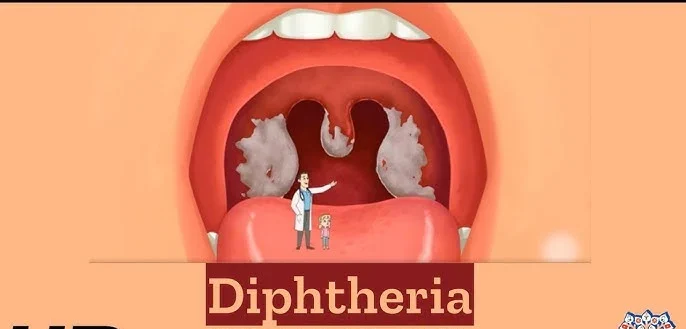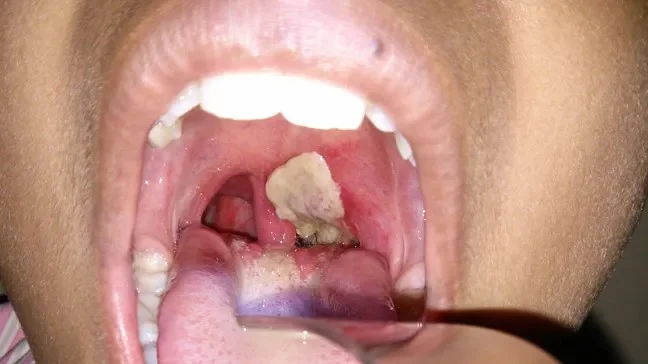Diphtheria is a disease that many forget, yet is lurking in some parts of the world. It was once among the prime causes of children dying – especially claiming children in areas where vaccination is poor. From the eyes of the public, it seems to all but be non-existent, but it remains a potent threat. In this article, let’s focus on understanding what diphtheria is alongside its dangers and protections.
What is Diphtheria?

An infection caused by a bacteria known as Corynebacterium diphtheriae will be classified as diphtheria. For this bacterium, the production of a certain toxin will make it lethargic to vital organs like the heart, nerves and other body parts. Even if some nations might not deem is as a problem due to a heavily reliance on vaccination, if the region lacks proper healthcare infrastructure, they will remain in danger.
How does Diphtheria spread?
Diphtheria spreads through:
- Droplets: Caught by coughing or sneezing from an infected individual.
- Skin contact: Open sores or ulcers from a person that is suffering from cutaneous diphtheria.
- Objects: Toys, towels or cutlery.
Being densely populated or poor hygiene standards increases one’s chances of catching diphtheria because these two factors boost its prevalence in communities with low vaccination rates.

What are the Symptoms of Diphtheria?
More than a simple throat ache folksDiagnosis and Treatment, each type of infection has different symptoms.
- Respiratory Diphtheria
- Before diagnosis Steps: Sore throat with slight fever and puffiness around the neck glands (usually confused for strep throat).
- Key symptoms: The patient will most likely have some sort of airway blockage due to formation of a thick greyish white membrane around their nose and throat region. This can lead to suffocation.
- Toxic symptoms: Some of the symptoms include: weakness, greatly increased heart rate, and paralysis (if the spread of toxin continues).
- Cutaneous Diphtheria
- Formation of skin ulcers, red lesions or sores similar to that of impetigo.
- These are less serious but always contagious alongside it.
One can readily face irreversible heart damage, nerve destruction, or die if they are unsupervised.
Why Is Diphtheria So Dangerous?
The true menace lies in the poison formed by the bacterium. It is capable of:
- Destroying the healthy area of the heart, resulting in myocarditis.
- Impeding movement in their muscles, eg. breathing if the diaphragm is involved.
- Causing a person to enter a coma or even bringing forth kidney failure.
Mortality rate goes up to 5- 10 percent even in cases with treatment, whereas this value can increase to 50 percent in areas where aid is not supplied.

Diagnosis and Treatment of Diphtheria
A throat swab or swelling of the skin is checked to see if it contains bacteria or its poison for a diagnosis.
Treatment along the lines:
- Diphtheria antitoxin: Neutralizes the poison (should be given at the earliest chance).
- Erythromycin or penicillin antibiotics: An aid in demolishing the bacteria.
- Supportive care: Following checkups like hospitalization, heart care, and professional breathing assistance.
Delaying treatment endangers a patient towards far greater problems.
Prevention: Immunizations Save Lives

Diphtheric vaccines are a part of standardized childhood shots and boasted a 95% success rate.
- DTaP: This combines the vaccinations for diphtheria, tetanus and pertussis (whooping cough). It is administered to children in 5 doses.
- Tdap/Td boosters: These are suggested for adults every 10 years.
Why Vaccinate? Immunization protects at-risk groups (for example, children not old enough to get vaccines).
Immunity fades gradually and renewals are crucial.
Diphtheria is rare due to vaccinations. However, it persists in conflict-washed countries like Yemen, Syria and Venezuela.
India, Africa, and Southeast Asia have regions that lack sufficient immunization.
The 2022-23 outbreaks in Indonesia and Nigeria clearly demonstrates the risks associated with vaccine reluctance and disrupted healthcare systems.
FAQs

Q: Can adults get diptheria?
A: Yes! The unvaccinated or intermittently vaccinated adults are increasingly becoming vulnerable.
Q: Is the vaccine safe?
Absolutely. Some light effects like a painful arm and sustained body temperature are usual but strong responses are rare.
Q: Can I travel safely to diphtheria high risk areas?
A: Avoid contact with people showing signs of the disease. Get the vaccinations before traveling to these areas.
Final Thoughts Diphtheria is still a threat in areas in which vaccination is resisted or hard to reach. Constant awareness redemption and moderate global vaccination attempts can help us eradicate diphtheria.








